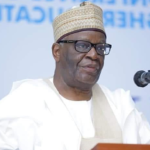Jeta Amata (the musical Inale [and Black Gold]), Chineze Anyaene (Ije), Izu Ojukwu (The Child), […] and others are making films with budgets between $250,000 and $750,000, often with international casts and locations.” He continues that “though there are still fewer than fifty high quality screens in about ten venues in Lagos, Abuja and a few other cities” that screens are increasing, and that “Nigerians are filling cinemas at $6-10 a ticket to watch home-grown films.” He critiques a recent The Economist article on Nollywood for quoting the UNESCO report that claims that Nigeria is second only to Bollywood in producing feature-length films. The Economist was “ridiculous” to cite the report, Aft claims, saying they gave “no thought to whether it even made sense that Nigeria produced more films than the U.S. or letting readers know that the figure dates from 2006.” He also claims that “my sources in Nigeria tell me that the number of films produced peaked in 2008 and has been in steep decline ever since due to piracy and changing consumer tastes. The [Economist] article presents a neo-colonial vision of African film (damning with faint praise) that does not do justice to what is really happening in Nigeria any more than analyzing straight-to-DVD features in the U.S. would tell you anything about the quality of U.S. films.” He appreciatively notes that “Nigerians have proven their leadership” in other areas of the arts, and “now they are proving their potential in film.”
I had read Aft’s piece a few months ago and passed by without comment. I too had read the unremarkable Economist article, and the UNESCO report which I found problematic in its lack of clarity on whether it was also counting independent productions in India and America alongside independent Nigerian films. I agree with Aft that the “new Nollywood” filmmakers are exciting. I have celebrated several of them in this column. However, upon a second reading, I found Aft’s article as problematic as the pieces he critiqued. While Aft attacked the Economist for presenting a “neo-colonial vision of African film” the tone of his own article came across as patronizing, that of a teacher praising a student for “proving their potential.” First why would we need to question “whether it even” makes “sense that Nigeria” produces “more films than the U.S.”? Granting a healthy suspicion of the methods used by the UNESCO report, why should it be so inconceivable that Nigeria might be capable of surpassing the number of productions in the U.S.? Second, Aft seems the most impressed that Nigerians are now producing films with high budgets and redeveloping the cinema release system. He dismisses the concept of “straight-to-DVD”, indicating that the future is definitely with the “theatrical” filmmakers. Yet, as thrilled as I am that Nigerian filmmakers are now accessing higher budgets and making incursions into world cinemas, I don’t think there is anything inherently inferior about low budget production or the “straight-to-DVD” system, which has allowed filmmakers with few resources (and no LA-based consultants until recently) to gain a massive following all over Africa and the African Diaspora. Indeed, the Nollywood model is one that should be studied and learned from, not dismissed as a primitive system which is slowly evolving from video to the “superior” form of cinema distribution first developed in the West.
Third, Aft quotes unnamed “sources” in Nigeria as telling him that “the number of films peaked in 2008 and has been in steep decline ever since”. I have heard this same complaint about the “decline of Nollywood;” however, this week I spent several hours looking at statistics from the National Film and Video Censors Board, to which every film marketed in Nigeria is supposed to be submitted. These figures indicate something rather different.
A caveat: NFVCB numbers are problematic. There are inconsistencies in their directories from one page to the next and between reports from zonal offices and the national board. NFVCB also reports only films that have been submitted. I can find no evidence in any of the NFVCB statistics I have seen (I don’t have access to statistics for every year) of the Nupe and Fulfulde-language films practitioners tell me are being made. I suspect the NFVCB underreports the number of films. However, I trust NFVCB numbers more than those reported by UNESCO which indicated they obtained data by a questionnaire “directly from countries” or by hearsay reported by the media.
While the 2007 UNESCO report claims that “[i]n 2005, 872 films were produced in video format” in Nigeria, figures from the NFVCB Film and Video Directory, Volume III, show that in 2005, 1246 films (including foreign films) were registered with the board. NFVCB indicates that during the two years of 2004-2005, 2194 local films and 617 foreign films were registered or censored with the boards. These figures indicate a steady rise in the numbers of Nigerian films. Two thirds as many films were submitted to the board in 2004-2005 as the 3113 films submitted in the seven years between 1994 and 2001. Although Nollywood is rooted in the Yoruba film industry and had its first huge video-film success in the 1992 Igbo film Living in Bondage, by 2004-2005, the majority of films were being made in English, which made up 1240 of the 2194 Nigerian films. 535 were in Yoruba, 368 in Hausa, 42 in Bini, three in Esan, two in Igbo and one each in the languages of Etsako, Irhobo, Itsekiri, and Ibibio.
By 2010, a report from the NFVCB Verification Unit shows that 1,612 Nigerian films were submitted to the board in 2010 alone, although only 1,114 were approved. Film production has not, in fact, gone down from the years UNESCO reported. In fact, it has slightly grown. Why then is there the popular perception that Nollywood is declining? Perhaps it has something to do with the language issue and the dramatic drop in English language film productions with the celebrities most known by international audiences. The statistics show that of the 1,114 films approved for release in 2010 only 133 (11%) were in English, while 582 (54%) were in Yoruba, 349 (29%) were in Hausa, 44 (3.5%) were in Bini. Five Igbo films and one Efik film were also submitted. I’m not sure how Ghanaian-Nigerian productions are being counted, and Hausa films are underreported here. Dr. Ahmad Sarari, Zonal Coordinator of the Northwestern NFVCB office, gave me a report (listing films by name) which showed that 417 Hausa films were verified from his office in 2010.
Aft may be right about the decline of Nollywood, if we, as many practitioners do, take the term “Nollywood” to refer exclusively to English films. But he is not right about the decreasing importance of the video-film genre to Nigerian audiences. The dissonance between Aft’s article and the numbers from the NFVCB illustrate the political perceptions of language in defining Nollywood, as opposed to what Nigerians are apparently producing and consuming, a debate which layers onto much older debates about the language of African literature. By dismissing out of hand the “quantity” of the films consumed by the massive Nigerian public over the “quality” of the cinema-release films, which, until they are released on video, are available only to a wealthy elite in Lagos, Abuja, and abroad who can afford to spend “$6-10 on a ticket,” Aft values the films for how they fit into a Western “developmental” paradigm rather than for what they already offer the vast majority of their consumers. Of course, we’re all proud of the new cinema films, but there is no contradiction between celebrating the independence and low-budget creativity of the Nigerian film industry and celebrating the increasingly more polished aesthetics and methods of distribution this industry is producing. After all, Hollywood wouldn’t have its masterpieces or its current world status if it didn’t also have its “trash,” which it still produces cheerfully in great quantities. Ultimately, though affirmation from the outside is nice, Nigeria does not need the approval of the West for validation of a film industry which has been doing very well on its own for the past thirty-five years.
 Join Daily Trust WhatsApp Community For Quick Access To News and Happenings Around You.
Join Daily Trust WhatsApp Community For Quick Access To News and Happenings Around You.


